7 conclusions from the 2020 Milan-San Remo
The birth of an icon, a non-sprinters' Classic and a decade of disappointment
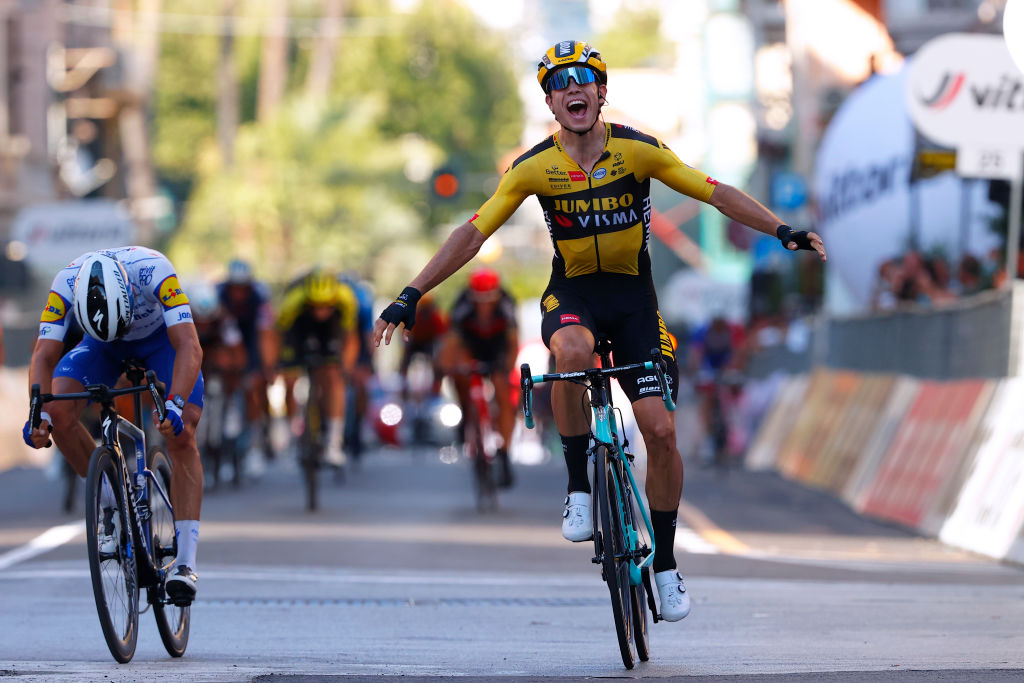
On Saturday, some five months later than its usual date, the peloton tackled the first Monument of the season, a drastically altered Milan-San Remo.
A number of factors combined to make this a unique edition of the race, including the mayors of a number of coastal towns refusing the race, and thunderstorms in Alessandria forcing massive changes to the course, as well as a date so soon after the restart meaning that preparation was minimal, and hot weather not usually experienced in the race's normal March date.
Jumbo-Visma's Wout van Aert followed up his Strade Bianche victory with another – his first Monument triumph -- narrowly outsprinting 2019 winner Julian Alaphilippe (Deceuninck-QuickStep) on the Via Roma in San Remo, a full 305km after starting out in Milan.
Yes, it was a memorable edition of Milan-San Remo for a multitude of reasons, and here we take a look at seven main conclusions from the race.
Van Aert: a new Monument man and Belgian icon
Wout van Aert's victory was met with rapturous eulogies in the Belgian papers. Coming just as Deceuninck-QuickStep's Remco Evenepoel was soloing to another astounding victory at the Tour de Pologne, Het Laatste Nieuws described the 'Super Saturday' as a quasi-religious experience, while Het Nieuwsblad noted that "even superlatives are barely sufficient" for what the pair pulled off.
Wout van Aert wins thrilling Milan-San Remo
Mixed feelings for Julian Alaphilippe after Milan-San Remo defeat
Wout van Aert: I still don't know what my limits are
Peter Sagan sees his Milan-San Remo glass half full after another fourth place
Nibali lacks Poggio punch but aggressive Trek-Segafredo animate Milan-San Remo
Mathieu van der Poel satisfied with Milan-San Remo debut despite 13th place
Van Aert became the first Belgian winner of Milan-San Remo since Andrei Tchmil in 1999 – with Fons De Wolf in 1981 the most recent before him – and did so with a display far beyond his experience on the road. Although not quite able to hold Alaphilippe at the top of the Poggio, he got back on the descent and kept his head at a time most would panic, with the reigning champion putting him on the front for the final 1,500m.
The 25-year-old was so self-assured, and it's that mental strength – which also contributed to his comeback from a career-threatening injury suffered at last year's Tour de France – that will surely lead to more success on the bike, and also more fame off it.
Get The Leadout Newsletter
The latest race content, interviews, features, reviews and expert buying guides, direct to your inbox!
As Het Nieuwsblad noted, he didn't shy away from his favourite status ahead of the race, nor his future capabilities after it, saying: "You don't only fill newspapers with that; you also win hearts with it."
CCC Team's Greg Van Avermaet has delivered many a result in the past few years, but Van Aert is arguably the heir to Tom Boonen as a bona fide icon and superstar in Belgium. He's also been talked about as a new Roger De Vlaeminck, largely due to his cyclo-cross background, but now also because he's got his Monument tally rolling.
"He's on the way to an impressive record – a record comparable to Roger De Vlaeminck," said Johan Museeuw on Sunday.
De Vlaeminck won 11 Monuments, including three editions of Milan-San Remo, and is one of only three riders to win all five. It remains to be seen if Van Aert can develop on the longer climbs to win Il Lombardia and Liège-Bastogne-Liège, but the Tour of Flanders and Paris-Roubaix are well within his grasp – this year, even.
No one said that Van Aert had won 'a' Monument on Saturday – they all said he had won 'his first' Monument. There's plenty more to come from a rider who could mark a generation. (PF)
A return to the coast, please
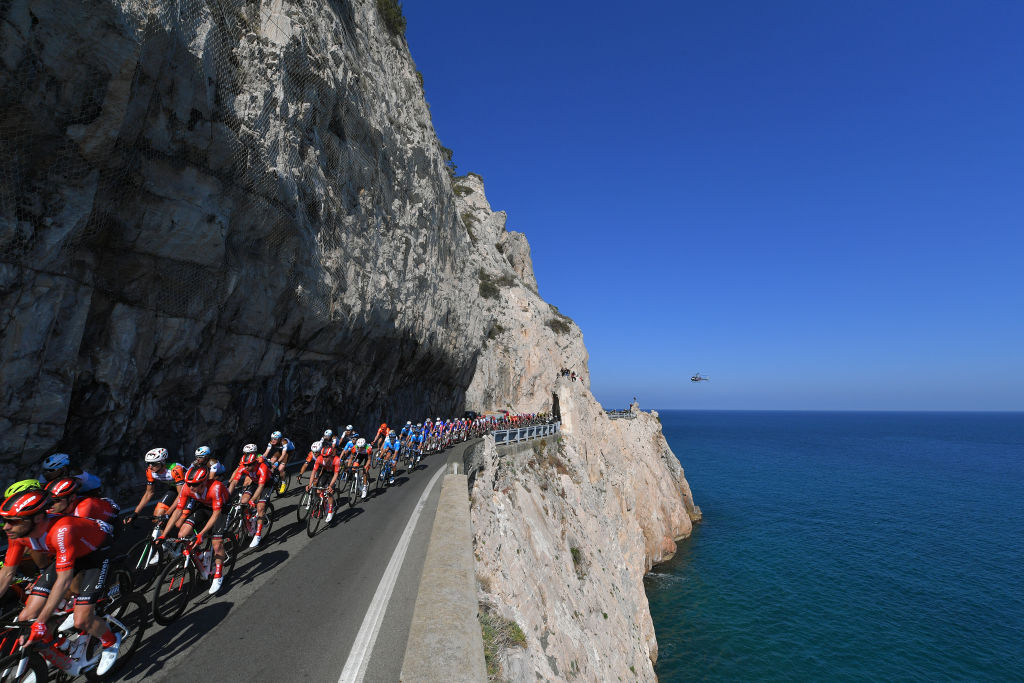
This year's Milan-San Remo ended with the usual crescendo and breathtaking finale, but the new inland route made for a long and uninspiring day in the saddle, with the new climb of the Colle di Nava and reduced team sizes of just six riders both contributing to nullify any major attacks.
Indeed, despite the best efforts of Bora-Hansgrohe's Daniel Oss, the race only truly came to life on the Poggio – after 289km – when Julian Alaphilippe attacked.
The Milan-San Remo peloton raced for a total of 305km (plus a 10km transfer to the official start), with Wout van Aert the fastest in 7:16:09, while Julien Duval of AG2R La Mondiale was the last of the 149 finishers, 29:52 back. Twenty-one-year-old Kiwi James Mitri (Vini Zabu KTM) deserves a special mention: he recorded a time of 7:54:43, but was cruelly deemed to be outside of the time limit.
After a dozen mayors along the Ligurian coast had refused to allow the race on their roads during the peak Italian holiday season, RCS Sport had threatened to use the inland route in the years ahead. Post-race, that now seems unlikely, with the debate instead returning to familiar ground: adding extra climbs.
The Poggio (1960) and the Cipressa (1982) have been lasting additions to the parcours, so it is perhaps time to find another short, coastal climb between the two – such as the Pompeiana, which was added for the 2014 edition before being cut due to landslides – to inspire the attacks. (SF)
Sagan's decade of disappointment
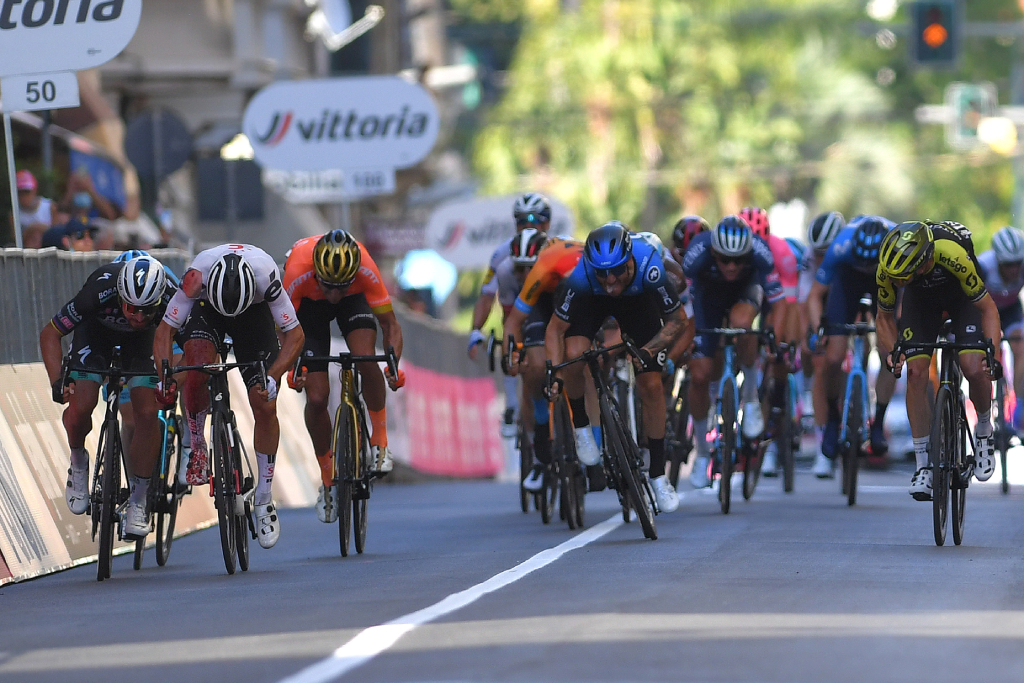
Peter Sagan rarely shows personal anger and disappointment after losing even a major race, and beyond the finish area on Saturday, the Bora-Hansgrohe rider took his fourth fourth place in a decade of Milan-San Remo disappointment with a pinch of salt and a shrug, with the Tour de France and Giro d'Italia bigger goals in this rescheduled 2020 season.
Incredibly, Sagan has also finished second twice, eight times in the top 10 and never out of the top 20 at Milan-San Remo. This time, he was only beaten by Michael Matthews (Sunweb) in the sprint for third place behind Van Aert and Alaphilippe, but remains the bridesmaid.
Milan-San Remo seems perfect for Sagan: he can go with the attacks on the Poggio and is fast enough for a small- or large-group sprint finish. Yet every year he misses out.
Bora-Hansgrohe's unilateral race strategy was again his Achilles' heel. For some reason – perhaps a veto by Sagan? – Maximilian Schachmann was sent to the Tour de Pologne instead of Milan-San Remo, despite his third place at Strade Bianche.
Sagan only had Daniel Oss and Marcus Burghardt to help him in the finale, but Oss drifted off the front on the descent of the Cipressa before powering on alone in some illogical move, while 37-year-old Burghardt closed down an early attack on the Poggio but was then distanced.
Like many others in the 23-man chase group, Sagan was on his own over the top of the Poggio, but the presence of a teammate could have been enough to catch Van Aert and Alaphilippe, and end Sagan's decade of Milan-San Remo disappointment. (SF)
Alaphilippe approaching his 2019 best
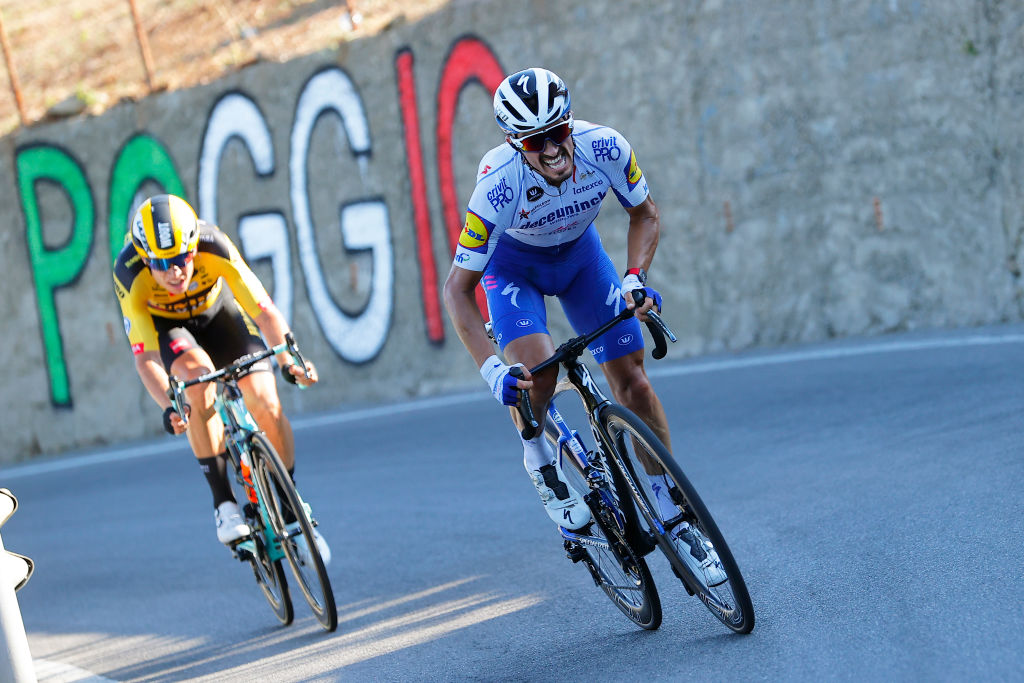
Julian Alaphilippe failed – by less than a wheel's length – to become the first rider since Erik Zabel in 2001 to take back-to-back victories at Milan-San Remo, but the Frenchman confirmed that he was back to his aggressive best, and only a superb Wout van Aert could beat him on the Via Roma.
Alaphilippe recently lost his father, and seemed to doubt his form when racing resumed, but his big-gear attack on the Poggio was arguably better than his 2019 move. This time only Van Aert could go with him, while the likes of Peter Sagan and Michał Kwiatkowski (Team Ineos) were left behind.
The Frenchman ultimately paid the price for his audaciousness, going deeper than Van Aert and so leaving a little less in his legs for the final sprint, but it was thrilling to see such panache-filled racing.
Alaphilippe is almost back to his dazzling level of 2019 and is keen to show it. After the finish, he collapsed on a kerb beyond the Via Roma, deep in pain but also in happiness.
The Tour de France Grand Départ in Nice is now less than three weeks away. Alaphilippe has already said that the overall classification is not an objective on this year's mountainous parcours, with Team Ineos and Jumbo-Visma set to go head to head.
Instead, his brother and coach, Franck, expects him to target stage victories, possibly the polka-dot jersey, and maybe even a spell in the yellow jersey after the hilly second stage around Nice.
With Milan-San Remo done, Alaphilippe will ride this week's Critérium du Dauphiné to switch to Tour de France mode. Inspired by his Milan-San Remo performance, Alaphilippe now seems to be back to his 2019 form and hungry for more. (SF)
The sprinters' Classic leans away from the sprinters
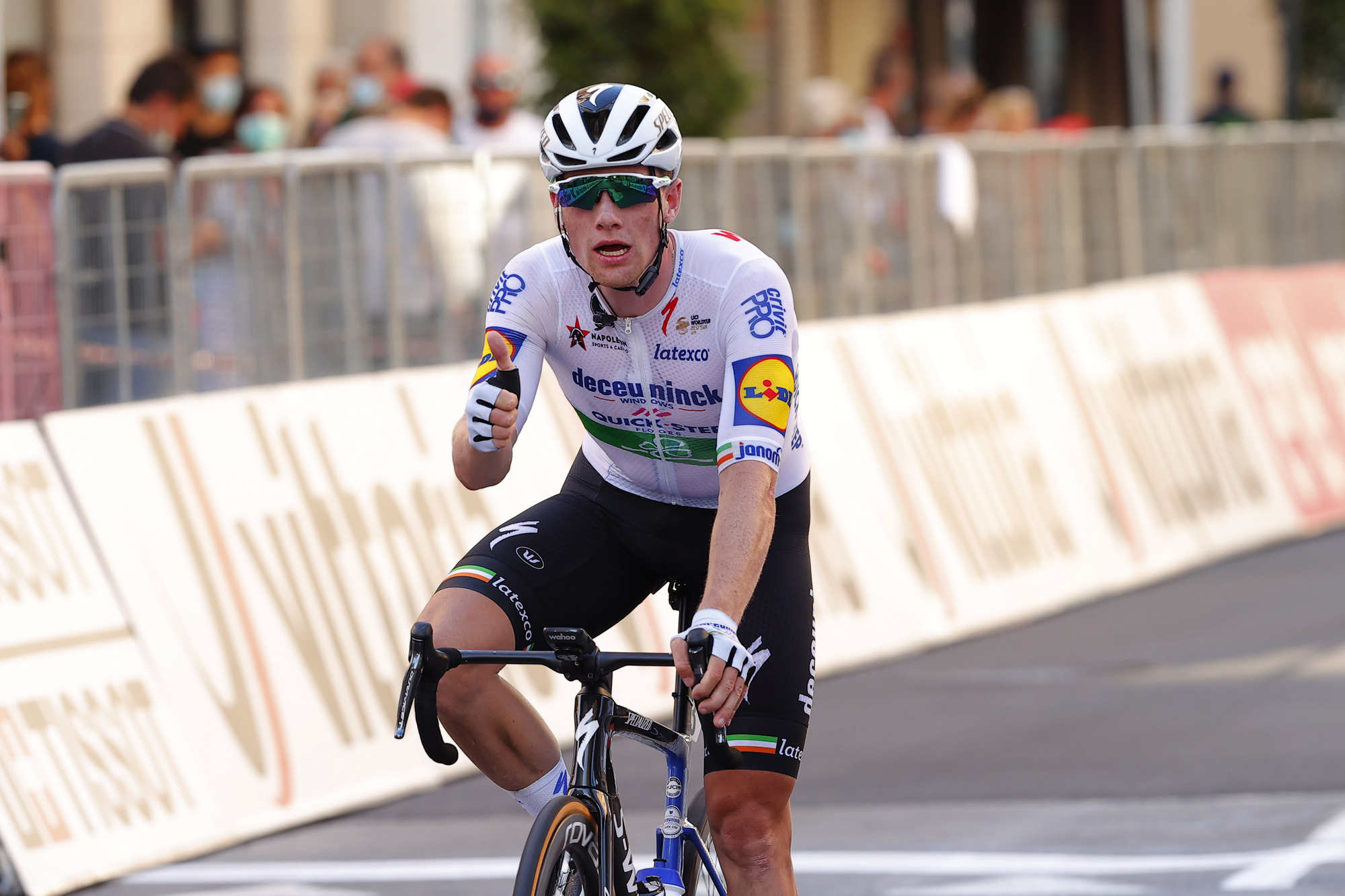
It's tricky to pinpoint a single reason, but the results sheet for Milan-San Remo shows just two sprinters in the top 25. Granted, Michael Matthews, third, and Peter Sagan, fourth, have both won sprints, but are seen as more versatile riders.
In the end, Giacomo Nizzolo (NTT), fifth, and Arnaud Demaré (Groupama-FDJ), 24th, both without teammates, were the only pure fast-men in the 23-rider selection behind Van Aert and Alaphilippe. Caleb Ewan (Lotto Soudal) and UAE Team Emirates' Fernando Gaviria both fell away on the Cipressa, while Elia Viviani (Cofidis) and Sam Bennett (Deceuninck-QuickStep) were dropped on the Poggio.
The August temperatures of over 30°C will have played a part in draining resources, while the route-change served up more distance and more elevation gain, no doubt softening the sprinters' legs ahead of the Cipressa and Poggio. The reduction in team sizes, too, made things harder to control and stretched the elastic of the race, leaving those sprinters who did survive the Poggio isolated.
The one-off conditions might be to blame, but this unique Milan-San Remo was still a continuation of what has become a trend that can't be passed off as coincidence: not since 2016 have we seen a bunch sprint on the Via Roma.
It's worth noting here that the six-man teams on Saturday were a further reduction after the drop from eight to seven for Monuments in 2018. In a race that's so finely poised between the sprinters and puncheurs, the balance of power has certainly swung in favour of the latter.
With so much evidence of the rewards of Poggio aggression, there'll surely be no shortage of incentive for attacks in coming years, and it's a trend that could well continue and perhaps mark this chapter of the race's history. (PF)
Rollercoaster week for Jumbo-Visma; now for the Tour de France
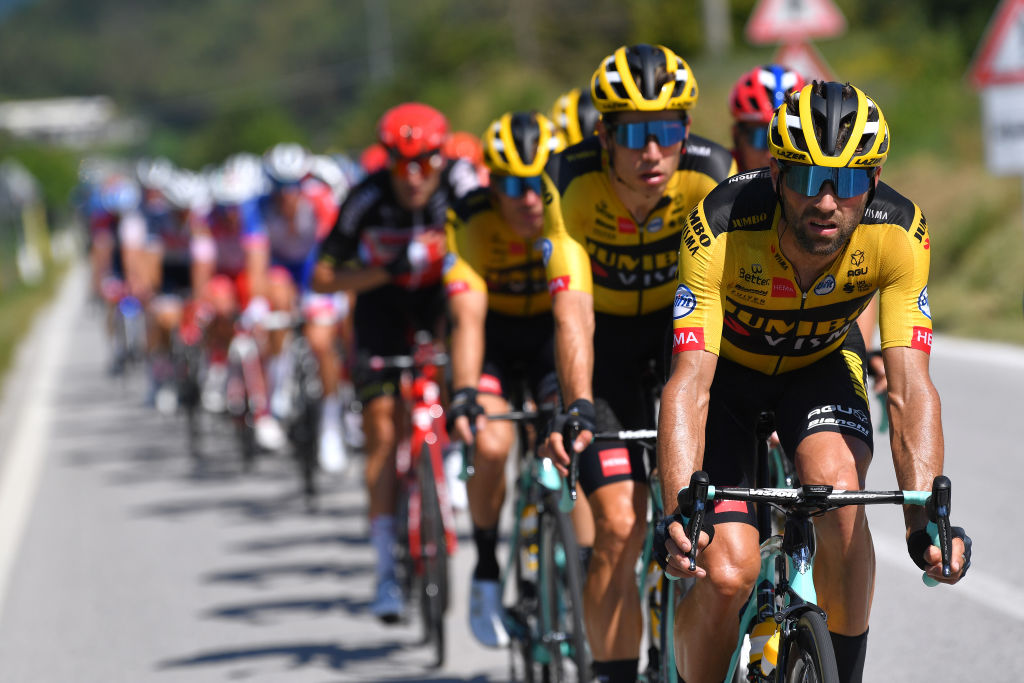
Jumbo-Visma have made some impressive improvements in recent years, and won some major races, but they have never endured a rollercoaster of emotions like the past week.
The past seven days started with Van Aert's Strade Bianche victory, included the emotional consequences of Dylan Groenewegen squeezing Fabio Jakobsen into the barriers at the Tour de Pologne, and then ended with victory at Milan-San Remo and Primož Roglič defeating Egan Bernal and Team Ineos at the Tour de l'Ain.
"Everything is very intense and emotional," team manager Richard Plugge admitted to AD, struggling to believe what Van Aert has overcome and achieved in the last 12 months after his terrible Tour de France crash.
"When he won Strade Bianche, I thought back to when I visited him last year and asked myself if he'd be OK. But you can see how strong he is. In January, we thought his recovery was going well, and then he showed really good numbers during our altitude training camp. Now he has given the team our first Classics Monument."
Next up is a titanic battle with Team Ineos at the Tour de France. Van Aert will transform from a Strade Bianche and Milan-San Remo winner into a domestique for Primoz Roglic, Tom Dumoulin and Steven Kruijswijk, with one of them perhaps able to stop Team Ineos' run of Tour de France success.
"We have worked very hard to outperform the competition," Plugge claimed. "We were able to continue building in a period when there was really nothing to build for. It gives us a lot of confidence that we can now get the best out of ourselves." (SF)
Matthews' class at start of Italian-facing autumn
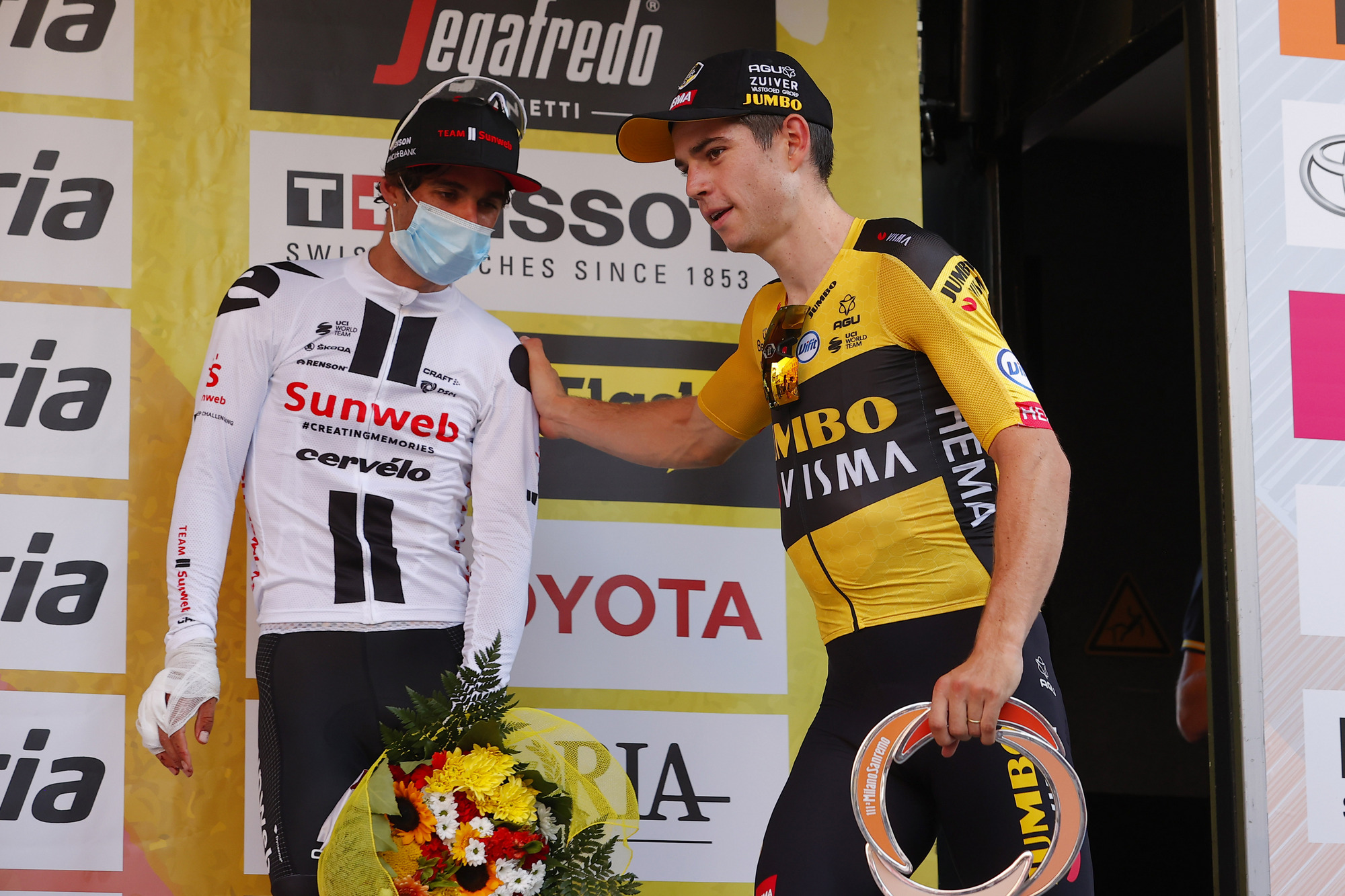
Michael Matthews was the best of the rest on Saturday, outsprinting the chase group to claim third place behind Van Aert and Alaphilippe. It was a strong return to racing for the Australian, and his second podium finish looked even more impressive given his experience on the Poggio.
Heading up the final climb of the race, Matthews was boxed in while trying to attack, and scraped against the wall, cutting his hand and shoulder and dripping blood down his leg and onto his white shoes. He fought through the pain, though, and sprinted to third despite not being able to hold his handlebars properly.
Matthews hadn't raced in Italy since last year's race, but will be spending plenty of time in the country over the coming months as he takes on Tirreno-Adriatico, for the first time since 2012, and the Giro d’Italia for the first time since 2015.
It's a far cry from the calendar he was planning for back in spring, with 'dream races' Amstel Gold and the Tour of Flanders, as well as the Tour de France, with the latter surprisingly struck off his calendar by his Sunweb team.
Despite that setback, the 29-year-old is still easily the team's most consistent performer, averaging almost eight WorldTour podiums for the past three seasons, also picking up multiple stage wins at all three Grand Tours during his career.
After a positive start to the rescheduled season on the Ligurian coast, Matthews looks in good stead to achieve more of the same between now and November – despite his race calendar being less than ideal. (DO)

Stephen is one of the most experienced member of the Cyclingnews team, having reported on professional cycling since 1994. He has been Head of News at Cyclingnews since 2022, before which he held the position of European editor since 2012 and previously worked for Reuters, Shift Active Media, and CyclingWeekly, among other publications.